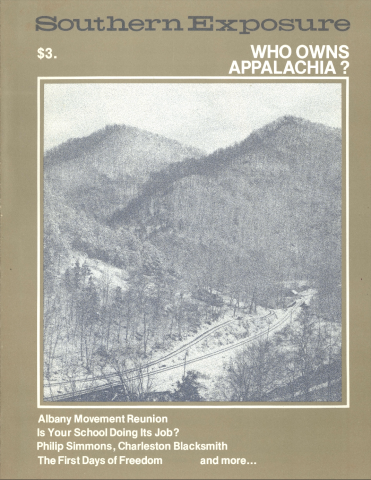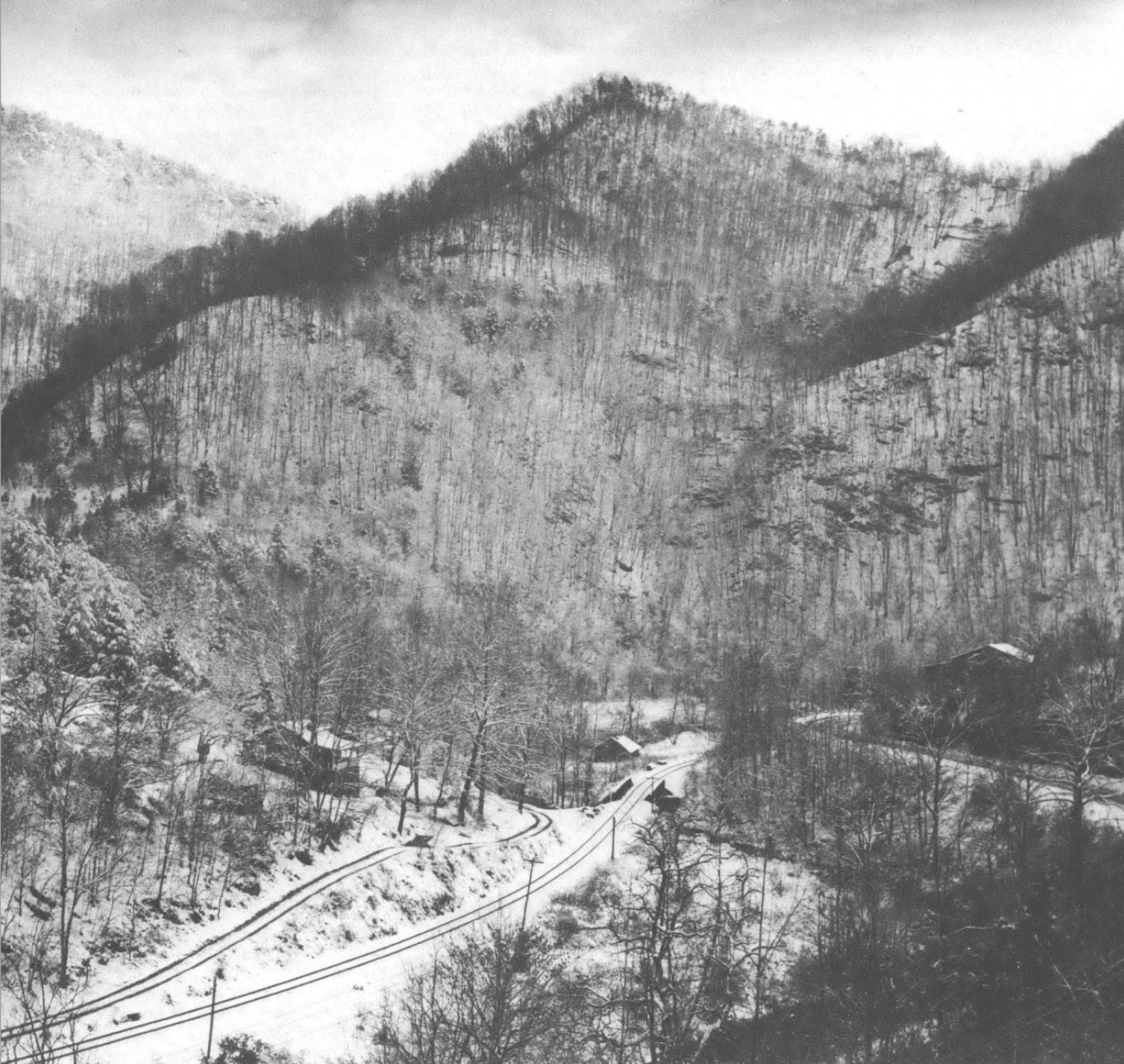
This article originally appeared in Southern Exposure Vol. 10 No. 1, "Who Owns Appalachia?" Find more from that issue here.
The people of Appalachia know they are poor, and for a long time a lot of them have thought they knew why: they don’t own their land, they don’t control its use, and they don’t share in the wealth it produces.
Now, thanks to a massive study of land ownership conducted by the residents of six Appalachian states over the past three years, they have the evidence to prove they’ve been right. What’s more, they’re using the evidence in activities all over the Southern mountains to change the system that keeps people poor in this very rich region. This special section of Southern Exposure is devoted to the land survey and the new activism rippling along in its wake. The study — titled Land Ownership Patterns and Their Impacts on Appalachian Communities — is the work of the Land Ownership Task Force of the Appalachian Alliance, a coalition of community groups, individual residents and scholars, and it runs to seven volumes occupying a good seven inches of shelf space.
Though certainly not the first look at land ownership in Appalachia, this one is the first to consider the whole region in a systematic manner. The researchers — about 100 local residents — collected data on the ownership and taxation of surface and mineral rights of 55,000 parcels of rural land in 80 counties, some 20 million acres in all, in Alabama, Kentucky, North Carolina, Tennessee, Virginia and West Virginia. Included were all parcels of 250 acres or more owned by local individuals and all parcels of 20 acres or more owned by nonresidents or corporations, government agencies or nonprofit groups like churches.
The findings are stark. Ownership of land and minerals in rural Appalachia is highly concentrated, with one percent of the local population, along with corporations, government agencies and absentee holders, owning 53 percent of the land surface. Of the land included in the survey, nearly three-fourths of the surface acres and four-fifths of the minerals are absentee-owned. Large corporations dominate the picture in much of the region. Forty percent of the land and 70 percent of the mineral rights are held by corporations — mostly coal and other energy companies, but timber companies are also present in force. The result is that little land is owned by or available to local people. Less than half the land in the 80 counties surveyed is owned by individuals, and less than half of that is owned by local individuals.
These facts color all aspects of life in the mountains, and this study concentrates its attention on the connection between who owns the land and such longstanding problems as the inadequacy of local tax revenues and public services, the lack of economic development, the loss of agricultural lands, the lack of sufficient housing and the patterns of energy development and land use.
The Center for Appalachian Studies at Appalachian State University in Boone, North Carolina, administered the study for the Appalachian Alliance. Research was coordinated regionally at the Highlander Center in New Market, Tennessee, and locally by teams of citizens in each state.
The facts and connections are all the more important to the people who did the research because these problems are their own. This was community-based research on a grand scale, and John Gaventa and Bill Horton, who shared the task of coordinating it, here describe how it was done. A summary of the findings begins on page 40, and reports from places where people are working for change begin on page 49. A description of the poets featured in this section appears on page 45.

